
PRESENTS
The Flowers of Canada


Canada's vastness, extending from the Pacific to the Atlantic, from the broad reaches of the Arctic to the temperate zone, has given this nation an incomparable variety of floral beauty ... beauty recognized by each of the Provinces and Territories in the selection of their official floral emblems.
The Official Flowers of Canada
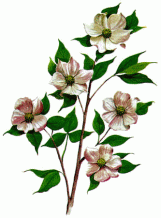 British Columbia
British ColumbiaPacific Dogwood (Cornus nuttallii) The Pacific dogwood has been British Columbia’s floral emblem since 1956. These big, white flowers bloom on tall trees in April and May. |
 Alberta
AlbertaWild Rose (Rosa acicularis) Alberta school children chose the pink, prickly wild rose as Alberta’s flower in 1930. It grows across Canada from Quebec to British Columbia |
 Saskatchewan
SaskatchewanWestern Red Lily (Lillium philadelphicum) Saskatchewan selected the Western red lily as its floral emblem in 1941. This tall, bright red flower grows in meadows and light forests. |
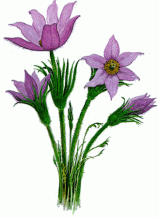 Manitoba
ManitobaPrairie Crocus (Anemone patens) The lavender coloured prairie crocus has been Manitoba’s flower for almost a hundred years. Children in Manitoba chose it in a vote 1906. It blooms very early in the spring, sometimes even before all the snow has melted. |
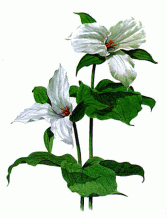 Ontario
OntarioWhite Trillium (Trilliium grandiflorum) Ontario chose the trillium as its provincial flower in 1937. This white flower grows in the forest in the springtime. It is called the trillium because it has three petals and three leaves. The “tri-“ part of trillium means three. |
 Quebec
QuebecBlue Flag (Iris versicolor Linné) The Madonna lily was Quebec’s flower for 36 years. It looks like the heraldic fleur-de-lis on Quebec’s flag. The Madonna lily is the symbol of French culture in France and Québec, but it does not grow naturally in the province. Therefore, in 1999 Quebec chose a new flower that grows throughout the province: the blue flag iris. |
 New Brunswick
New BrunswickPurple Violet (Viola cucullata) This small purple or dark blue flower grows in wet meadows and forests. It grows very well all over New Brunswick. The purple violet was chosen as the provincial flower in 1936. |
 Nova Scotia
Nova ScotiaMayflower (Epigaea repens) Nova Scotia selected the mayflower as its floral emblem in 1901. The mayflower grows along the East coast of North America. Early American settlers called it mayflower because they saw it as the first flower of spring. They named it after their ship, which carried them to North America in 1620. |
 Prince Edward Island
Prince Edward IslandLady's Slipper (Cypripedium acaule) Prince Edward Island adopted the lady’s slipper as its floral emblem in 1947. The flower gets its name from its petals, which are shaped like a woman’s shoe. It grows in the cool shade of the forest and it blooms in the springtime. |
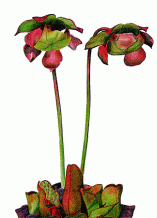 Newfoundland and Labrador
Newfoundland and LabradorPitcher Plant (Sarracenia purpurea) The pitcher plant is Newfoundland and Labrador’s provincial flower. Newfoundland selected this plant as its floral emblem in 1954. It is called the pitcher plant because part of it can fill with water like a pitcher. Insects get trapped in the water and the plant eats them. |
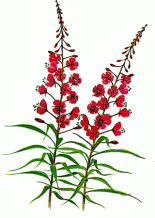 Yukon Territory
Yukon TerritoryFireweed (Epilobium angustifolium The Yukon chose the fireweed as its floral emblem in 1957. The fireweed is a tall plant with many small, dark pink flowers. It grows in places like clearings or next to roads and rivers. It is called “fireweed” because it is one of the first plants to grow after a fire. |
 Northwest Territory
Northwest TerritoryMountain Avens (Dryas octopetala) The Northwest Territories selected the mountain avens as its territorial flower in 1957. This short, white flower with small leaves can grow in high, rocky ground. |
 Nunavut Territory
Nunavut TerritoryPurple Saxifraga (Saxifraga oppositifolia) Nunavut’s purple saxifrage grows well in cool weather. It is a small, bright-purple flower that grows like a mat over rocks and gravel. It can be found growing all over Nunavut, which is why the territory chose it as its floral emblem in 2000. |
 Canada
CanadaThe Maple Leaf (Acer saccharum ) Not Officially Adopted |

This page is part of Knight's Canadian Info Collection
Please visit our other pages
Site © by K.C.I.C. - A. Knight (Webmaster)
{Please view our "Legal" page for use permission}